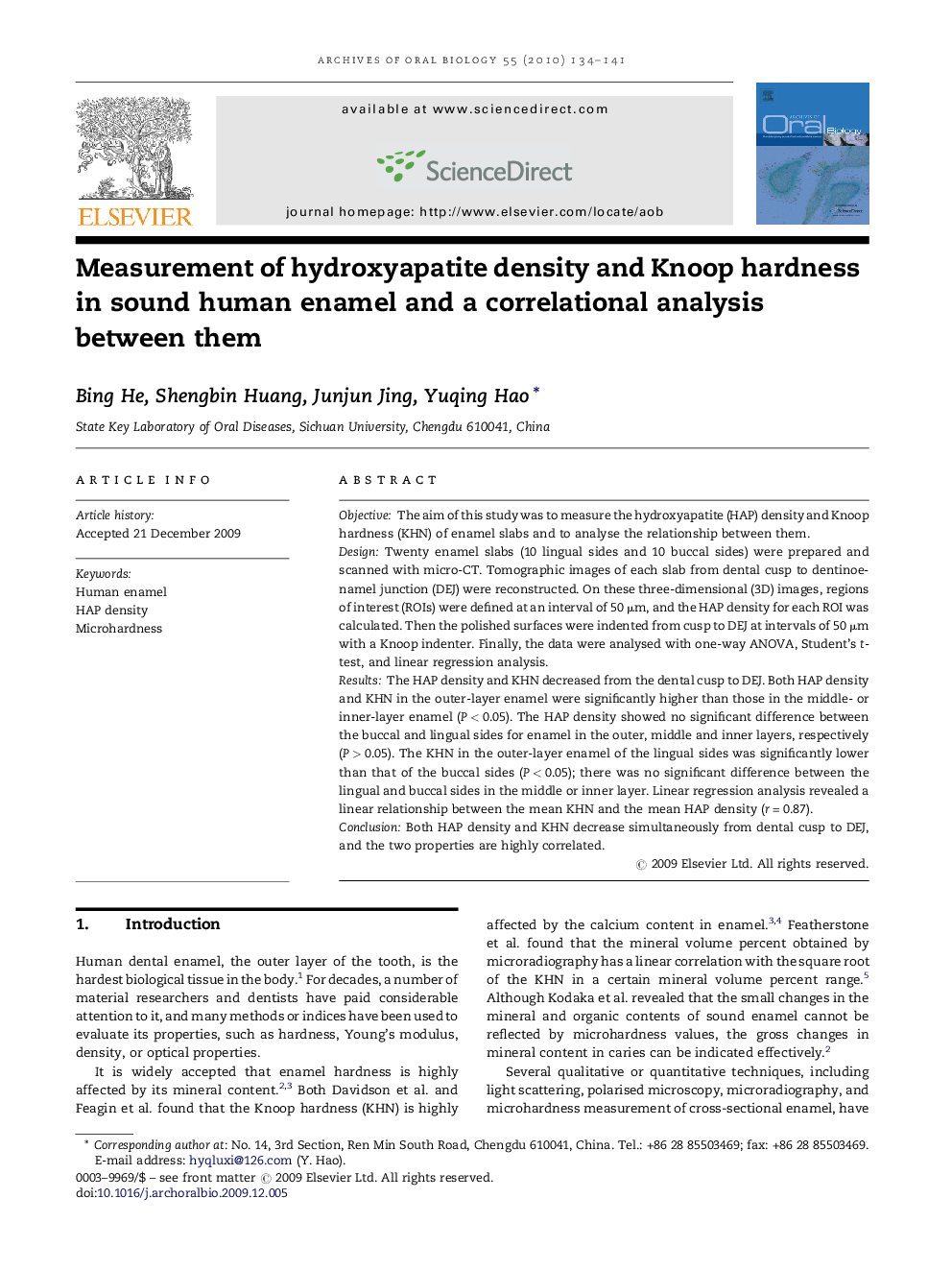| Article ID | Journal | Published Year | Pages | File Type |
|---|---|---|---|---|
| 3121539 | Archives of Oral Biology | 2010 | 8 Pages |
ObjectiveThe aim of this study was to measure the hydroxyapatite (HAP) density and Knoop hardness (KHN) of enamel slabs and to analyse the relationship between them.DesignTwenty enamel slabs (10 lingual sides and 10 buccal sides) were prepared and scanned with micro-CT. Tomographic images of each slab from dental cusp to dentinoenamel junction (DEJ) were reconstructed. On these three-dimensional (3D) images, regions of interest (ROIs) were defined at an interval of 50 μm, and the HAP density for each ROI was calculated. Then the polished surfaces were indented from cusp to DEJ at intervals of 50 μm with a Knoop indenter. Finally, the data were analysed with one-way ANOVA, Student's t-test, and linear regression analysis.ResultsThe HAP density and KHN decreased from the dental cusp to DEJ. Both HAP density and KHN in the outer-layer enamel were significantly higher than those in the middle- or inner-layer enamel (P < 0.05). The HAP density showed no significant difference between the buccal and lingual sides for enamel in the outer, middle and inner layers, respectively (P > 0.05). The KHN in the outer-layer enamel of the lingual sides was significantly lower than that of the buccal sides (P < 0.05); there was no significant difference between the lingual and buccal sides in the middle or inner layer. Linear regression analysis revealed a linear relationship between the mean KHN and the mean HAP density (r = 0.87).ConclusionBoth HAP density and KHN decrease simultaneously from dental cusp to DEJ, and the two properties are highly correlated.
